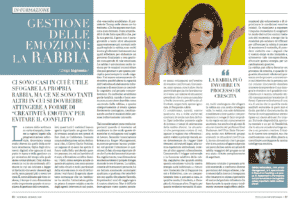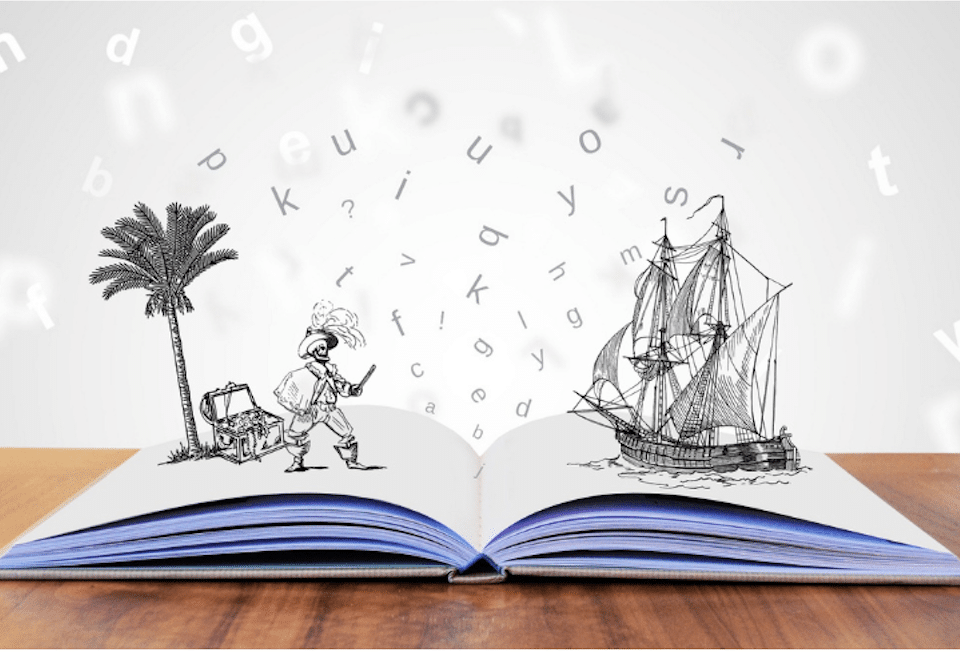
With heart and mind at school
26 May 2020
NEW LEADERSHIP BETWEEN LIQUID SOCIETY AND DIGITAL REVOLUTION: A CHALLENGE FOR THE WORLD OF EDUCATION
28 October 2020Rubric “PSYCHOLOGY OF EMOTIONS” by Diego Ingrassia – “MANAGEMENT OF EMOTIONS: RAGE”
for PSICOLOGIA CONTEMPORANEA – Jealousy – no. 276, November-December 2019- GIUNTI EDITORE
There are cases in which it is useful to vent one’s anger, BUT THERE ARE MANY OTHERS IN WHICH YOU SHOULD TAKE FORMS OF “EMOTIONAL CREATIVITY” TO AVOID CONFLICT
The nature of writing on printed paper, together with reasons related to editorial scheduling, determines very different times from those of instant writing, the child of the digital tools we all carry in our pockets and the somewhat neurotic time management to which we have become accustomed. Thus, from the moment I am writing to the instant you start reading the article in front of your eyes, more or less three months have passed. And, as we have already seen together, time is a very important dimension when we deal with emotion management.
Yesterday, almost every news outlet opened by reporting on a serious incident near San Jose, California. During a summer food event, the Gilroy Garlic Festival, a 19-year-old boy opened fire on the crowd, killing four people, including a 6-year-old boy, and wounding a dozen others. The facts, as is always the case in these situations, are still not completely clear and many details of the event are still being worked out; however, the various agency launches report that a witness heard the bomber shouting, before being shot dead by the officers on the scene, that ‘he was very angry’. President Trump in the same hours tweeted: ‘The shooter has not yet been stopped. Be careful!’ Beyond the specific fact that, due to its seriousness, the gesture is not comparable to many other apparently more normal situations in which anger explodes, there are many interesting elements to reflect on in order to elaborate a path aimed at a conscious management of this emotion.
.
The angry is an emotion that is much feared because of the uncontrolled reactions it can generate and therefore almost always perceived negatively. It can be extremely destructive as it alters an individual’s ability to process information and exercise cognitive control over their behaviour. An angry individual loses lucidity, caution and common sense, not surprisingly described as ‘blinded by anger‘, and this behaviour often proves to be highly contagious, even affecting the reactions of those indirectly involved. Such considerations are very important when we are analysing how these dynamics develop in the workplace.
According to the British association Anger Management, many people have problems dealing with the emotion in question; the figure it reports says that 40 per cent of workers get angry on a regular basis, manifesting their discomfort during working hours.
Ager, like other primary emotions, has a universal trigger: someone or something interfering with what we are doing, thus preventing us from achieving our goal. It is not difficult to imagine how this thought can develop in the context of conflictual relationships. The occasion, quite often, is nothing more than the proverbial straw that breaks the camel’s back: a collection of previous situations that have accumulated at an unconscious level, because they were badly dealt with, endured, often ignored, frequently suffered. We get angry, therefore, against someone, but sometimes also against undefined entities.
Each individual has different trigger thresholds and activation times for anger. The situations we perceive against us, or the reasons that offend our values and moral principles, are determined by triggers (i.e. activating elements) linked to our individual experience, along with others learned culturally. Knowing the universal trigger and adaptive function of anger, we know that when this emotion is triggered, all our energy will be directed towards removing the obstacle that stands between us and the goal, with behaviour aimed at bringing home, somehow, the result, to the detriment of everyone else.
Because of this obviousneed for action, many argue that venting anger is a useful strategic choice. In reality, not only do we have to consider how this behaviour is actually prevented by commonly accepted social rules, but also that the results of some research by Professor Brad Bushman of Ohio State University, carried out with different groups involved in conflict situations, showed that the group that was able to vent their anger by hitting a punching bag had greater accumulations of anger than the group that was simply asked to wait.
We started this article by comparing different perceptions of time: well, the data from the research teach us that staying waiting allows us to get out of therefractory period (the phase during which we are totally immersed in the effects of emotion) faster and restore the initial emotional conditions. If we can overcome the immediate impulse to hurl ourselves destructively against the obstacle of the moment, it emerges that the healthiest and most effective way to deal with anger is to try to maintain control, to get in touch with the signals our body is sending us and, through that awareness, harness that energy for positive change.
Anger can then favour a growth process, and when it concerns relational situations we can also try to focus on the objective that the person we are arguing with wishes to achieve (understand their need) and ask ourselves if it is possible to reconcile it with our own, avoiding sterile oppositions (force escalation). Working out a way forward that somehow satisfies both parties is not easy, because it is a far cry from the stereotypical forms of confrontation we are all too used to.
It requires willingness, open-mindedness and a bit of flexibility, which on some occasions also draws on creative thinking.
These are not easy resources, but they are a challenge ready to help develop our emotional intelligence.




